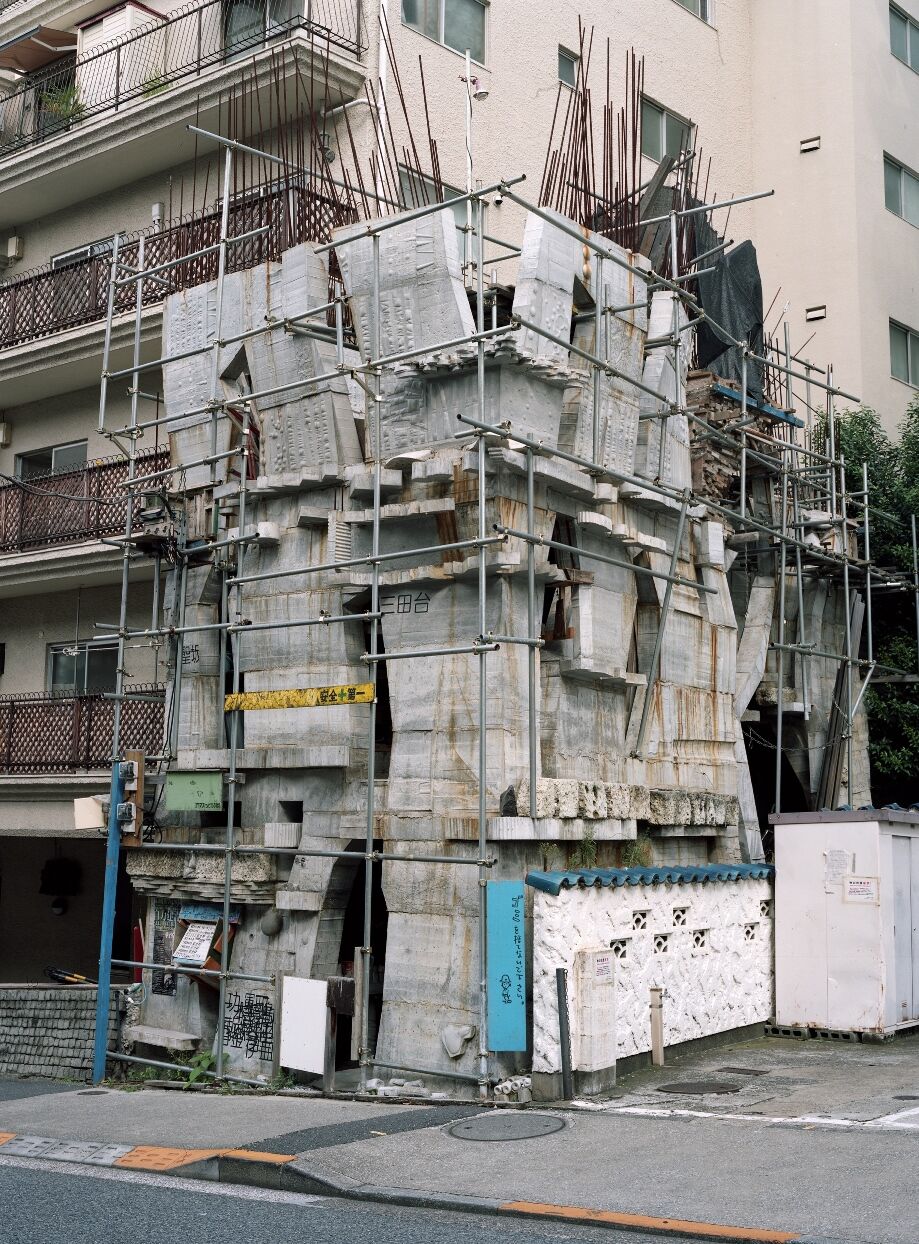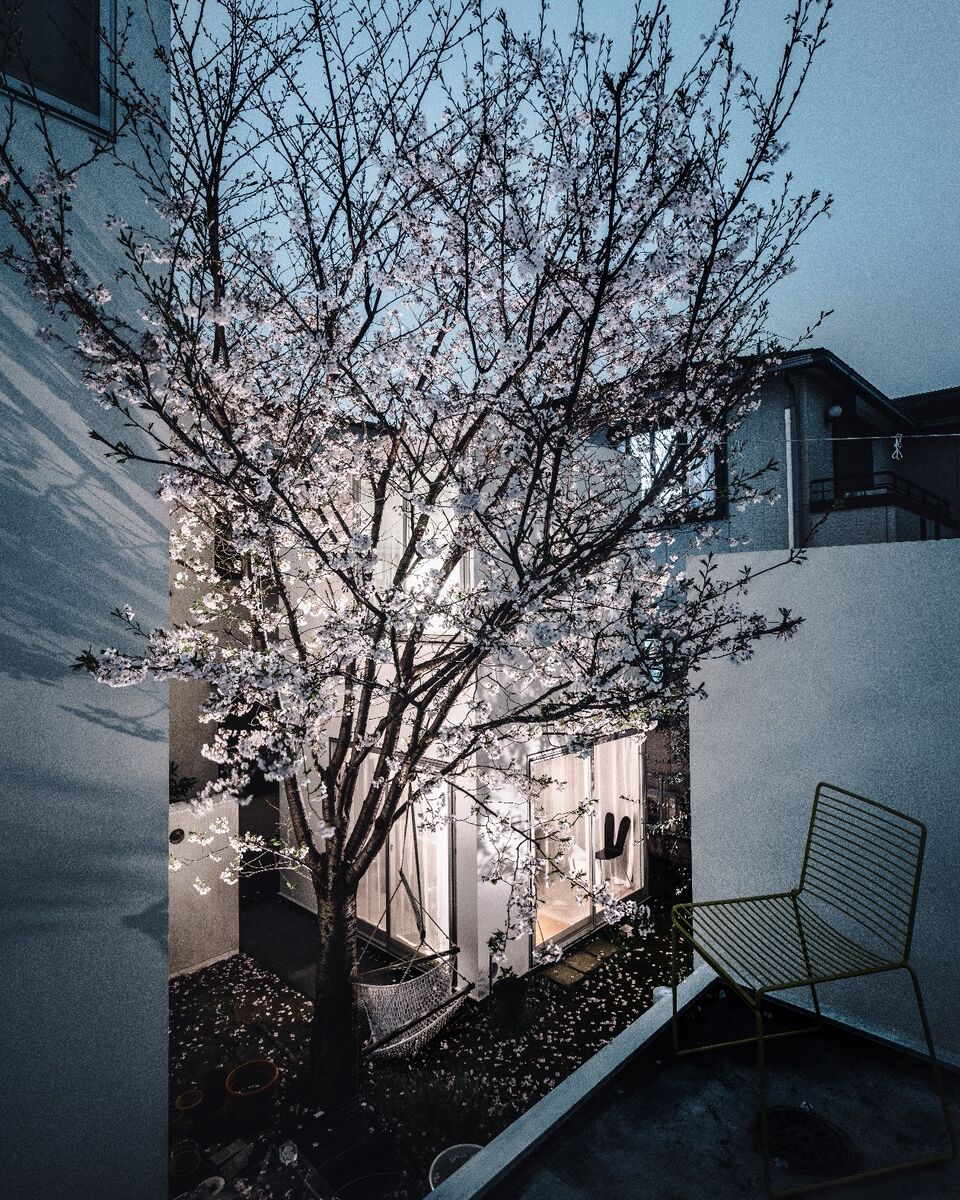
Office of Ryue Nishizawa, Moriyama House, 2005, Photo: Takae Satoshi
On a sunny day during the renowned ‘sakura’ (cherry blossom) season in Japan, I visited the Grand Shrine located in the city of Ise, Mie Prefecture, a couple of hours south of Tokyo on the speedy Nozomi train. The temple, which is dedicated to the sun goddess Amaterasu, is regarded as the spiritual resting place of the souls of defunct Japanese emperors and it is peacefully immersed in nature. This ancient place of worship, which dates back to the third century, is a prime example of minimalistic Shinto architecture and it is constructed entirely from joined timbers of solid cypress wood. The visual effect transmits a sense of unaltered eternity and peace. The shrine is built anew every twenty years following the millennial Shinto principles of purity and renewal that link the permanent with the transient, tradition with change, mixing antithetic concepts that distinguish contemporary Japan.
Tokyo is the epicentre of modern Japan and the city that, more than any other in the country, encapsulates contrasting architectural concepts and constant renewal, where ancient temples coexist with cutting-edge, modern buildings conceived to satisfy present-day needs. Pritzker Prize recipients Kenzo Tange, Fumihiko Maki, Tadao Ando, Ryle Nishizawa and Kazuyo Sejima, Toyo Ito and Seigeru Ban have all left a noticeable mark on the urban landscape and contributed to developing the futuristic skyline. Young and promising architects have also contributed to iconic buildings. Prominent examples are the experimental House Na in the residential suburb of Koenji by Sou Fujimoto and the Sarugaku retail complex by Akihisa Hirata in Daikanyama district. Buildings designed by international architects are also represented in the Japanese capital, although they are the exception rather than the norm.
The Meiji Shrine, located in an evergreen forest in downtown Tokyo, is a quintessential example of the nagare-zukuri style and a fine illustration of sacred Japanese architecture. Its South Shrine Gate connects visitors to the tree-lined avenue Omotesando-dori that is home to luxury boutiques of the wealthy Tokyo district of Aoyama, the equivalent of Bond Street in Mayfair in London or Les Champs Elysees in Paris. In a striking difference with similar fashion districts in the world, each building is custom designed. The avenue hosts hundreds of shops whose structure and use of space is exceptionally innovative. Cutting-edge architecture can be found at the Dior building, a sleek and well-proportioned glass edifice designed by the architect studio SANAA and the flashy Louis Vuitton store, designed by Jun Aoki, whose facade showcases geometric cladding of the building that resembles the brand logo. The top floor hosts art exhibitions and displays Dan Flavin’s works from the collection of the Fondation Louis Vuitton until September 2017. Next to it, the imposing Tod’s building, designed by Toyo Ito, uses a mix of glass and concrete that mimics the natural growth patterns of the trees nearby and creates unique reflections of nature and human presence in the building. At Omotesando crossing, the walk continues onto avenue Miyaki-dori that hosts a series of innovative and distinctive buildings. The Prada store, designed by Swiss architects Herzog & De Meuron, is a strikingly unconventional six-storey glass crystal that looks soft despite its sharp angles. The Miu Miu building, also designed by Herzog & de Meuron, has an understated metallic surface that lends a distinctly intimate quality. The walk continues with several diverse edifices and unconventional spaces.
Innovative architecture is scattered across the various districts in Tokyo. The Fuji TV headquarters in the Odaiba district, designed by Kenzo Tange, is a futuristic metallic clad building featuring a massive silver ball thirty-two metres in diameter protruding out of the upper floors of the building that serves as an observation deck, offering spectacular views across Tokyo Bay. The Asahi Beer’s Super Dry Hall, designed by Philippe Stark, with a beer glass shape and an enormous golden flame on top is one of the most iconic and notable buildings in Tokyo.
Japanese architecture is celebrated around the world. The ongoing exhibition The Japanese House: Architecture and Life after 1945 at the Barbican Centre in London is open until 25 June, and presents a life-sized reproduction of the Moriyama House (2005) built in Tokyo by Ryue Nishizawa from the SANAA architects studio and the House in a Plum Grove (2003) designed by Kazyuo Sejima. The Moriyama House proposes a minimal house concentrated in ten disconnected units. Landscape, city and house become indistinguishable. House in a Plum Grove is a contained and vertical house built on a limited surface and with the view on a plum tree in the private tiny garden.
The devastation of Japanese cities during World War II prompted the creation of new living spaces. Novel building techniques were experimented with as the innovative use of the traditional constructions that characterizes modern Japanese architecture developed. In recent years, recurrent earthquakes and the Fukushima Daiichi nuclear disaster prompted a trend in residential architecture that has respect for nature and sustainability at its core. In response to the 2011 earthquake and the consequent Fukushima Nuclear Power Plant incident, many new residential houses have been built with an innovative and environmental-friendly approach. For instance, the Kuroda family who reside in the outskirts of Yokkaichi, an hour’s drive from Nagoya, have built their home with joined timbers of woods using traditional post and beam construction techniques. Internal walls are made of woven bamboo as in traditional houses and interior design includes old-fashioned Japanese sliding doors, tatami and wooden floors. Against this traditional background, the house is powered by solar panels installed on the rooftop which guarantees self-sufficient and environmentally-conscious energy use. Plenty of similar living spaces have been created across the country. It is no surprise that the 2014 Pritzker recipient was the Japanese architect Shigeru Ban, whose iconic constructions such as House at Hanegi Park – Vista in Tokyo and the Villa at Sengokubara in Hakone are built from recyclable materials, such as wood, paper and cardboard tubes.
The visual appearance of Japanese architecture is inherently linked with contemporary art. The artist Takahiro Iwasaki, who will represent Japan at the upcoming 57th Venice Biennale and regarded as a successful example of Japan’s new generation of young artists, creates art by reinterpreting ancient buildings. In the series of works Reflection Model, he reinterprets the reflections that sacred buildings cast on the surrounding environment. In a work of this series, a miniature reconstruction of a traditional Japanese shrine is suspended in the air in a way that combines the shape of the building with its illusionary reflection in the water to create a single, complete form. In another acclaimed series Out of Disorder, urban landscapes are created out of everyday objects like the bristles of toothbrushes, bath towels and duct tape. These works are reminiscent of catastrophic architectural effects and environmental disasters. The Urano gallery that represents Iwasaki anticipated that his work at the Venice Biennale will reflect “energy management principles, maritime border and earthquakes by using steel towers, gantry cranes, coastal industrial area, marine oil rigs, and inspiration from the Itsukushima shine in the island of Itsukushima.” Once again, an exemplary illustration of strong bonds between Japanese architecture and contemporary art.
‘The Japanese House: Architecture and Life after 1945’ runs until 25 June at the Barbican Centre in London. Takahiro Iwasaki shows at the Japan Pavilion at the 57th Venice Biennale until 26 November.
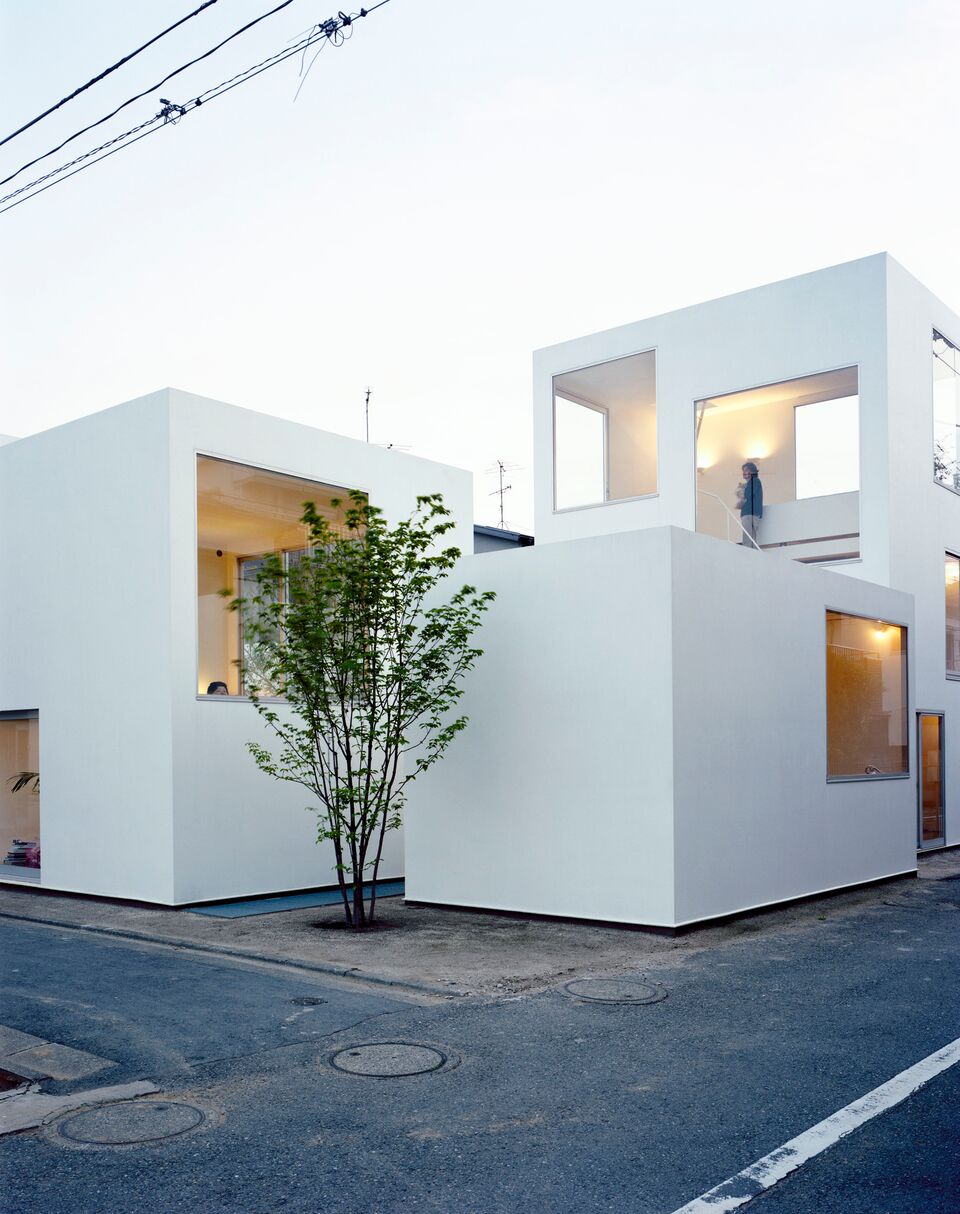
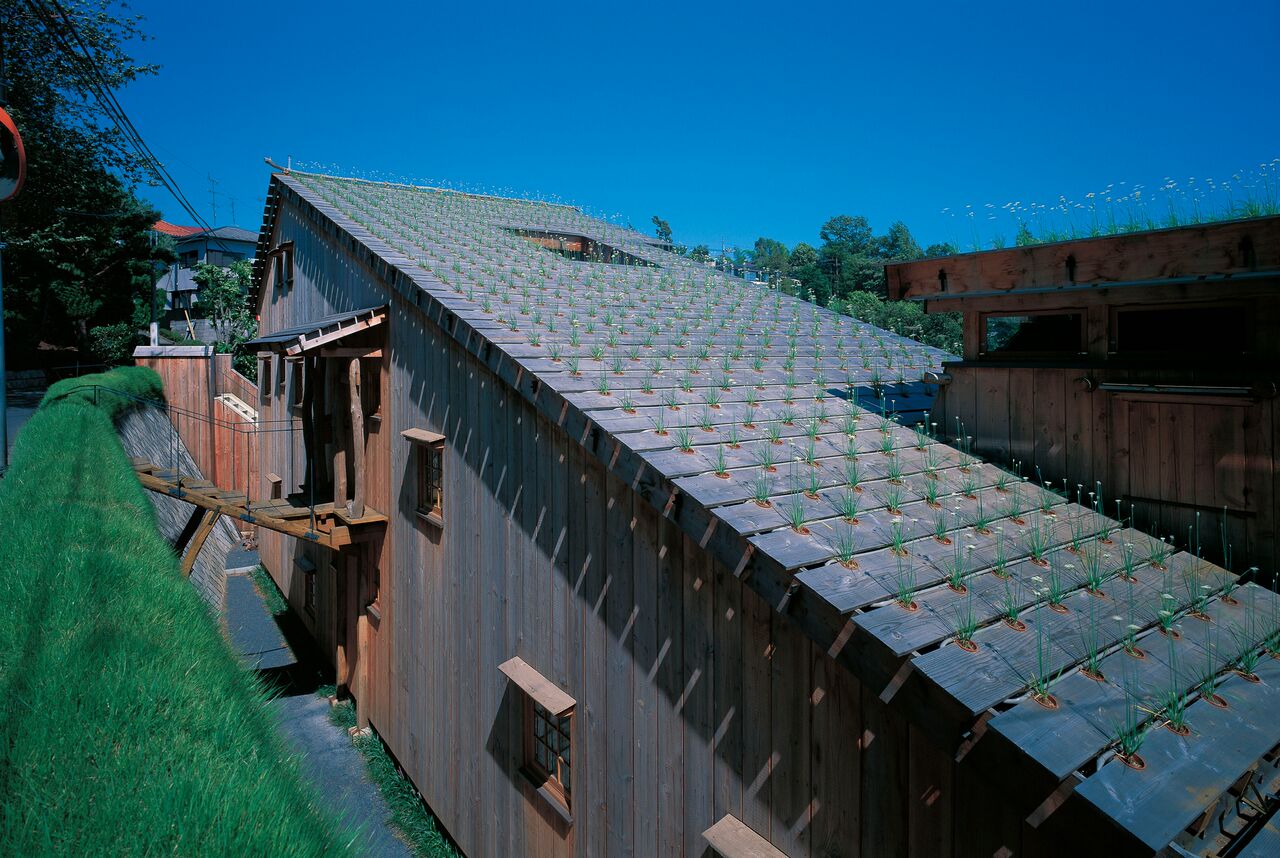
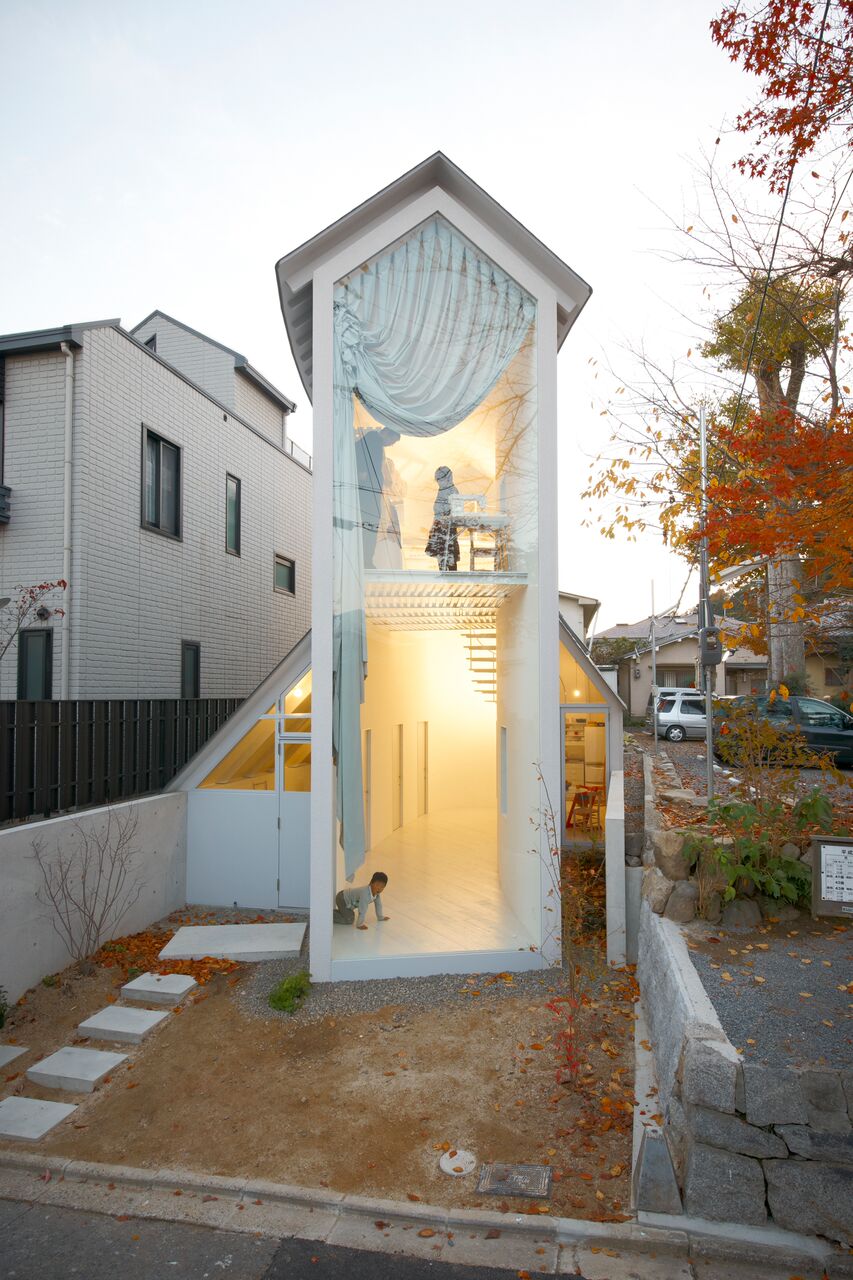
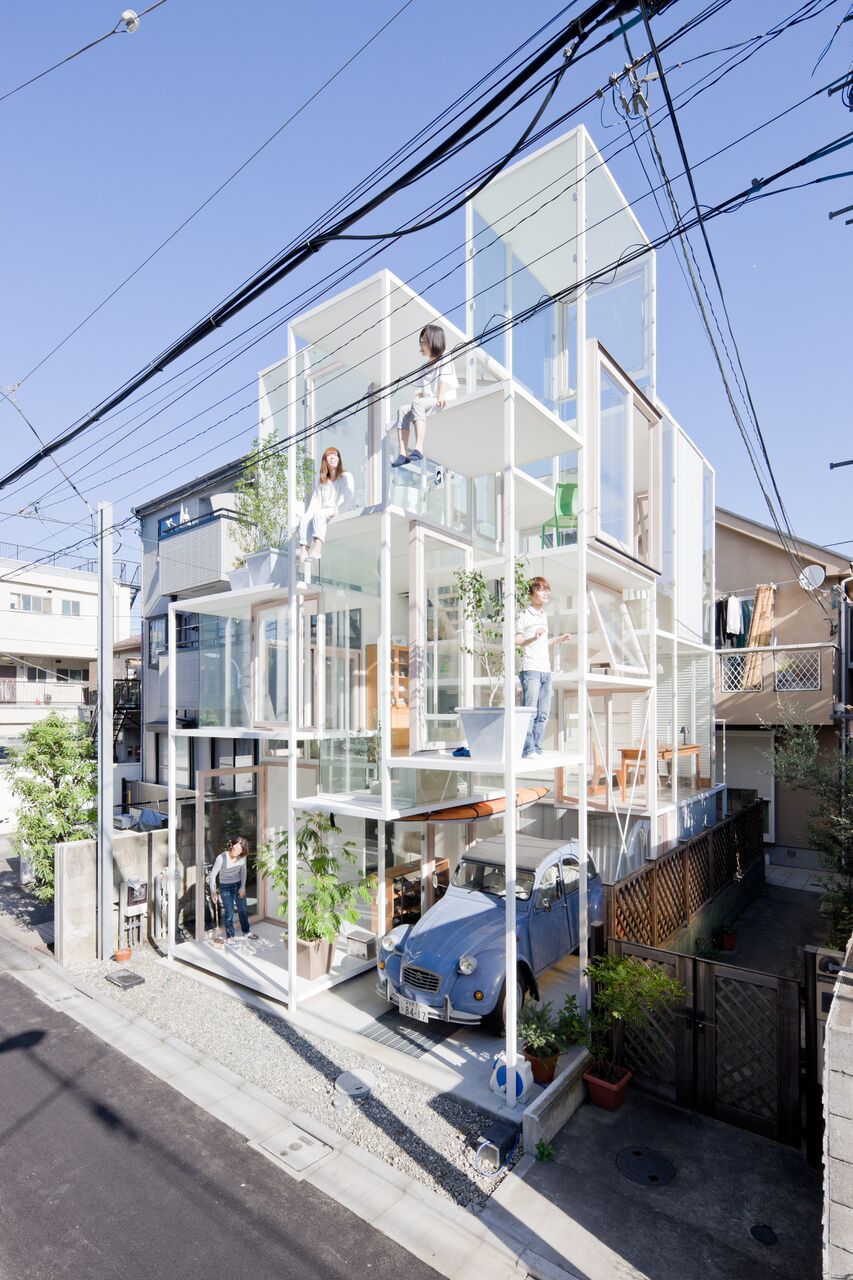
Sou Fujimoto Architects, House NA, Tokyo, Japan, 2011. Photo by Iwan Baan
